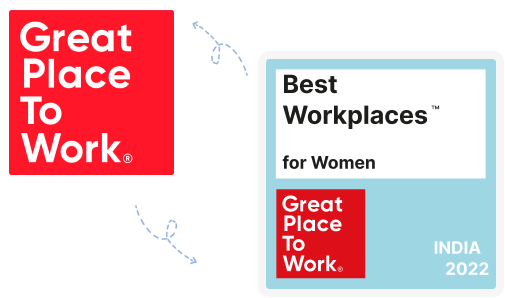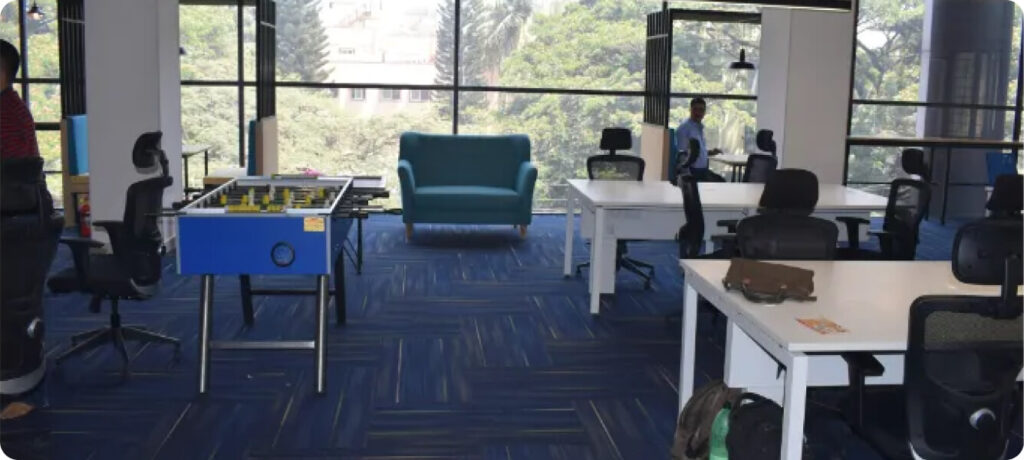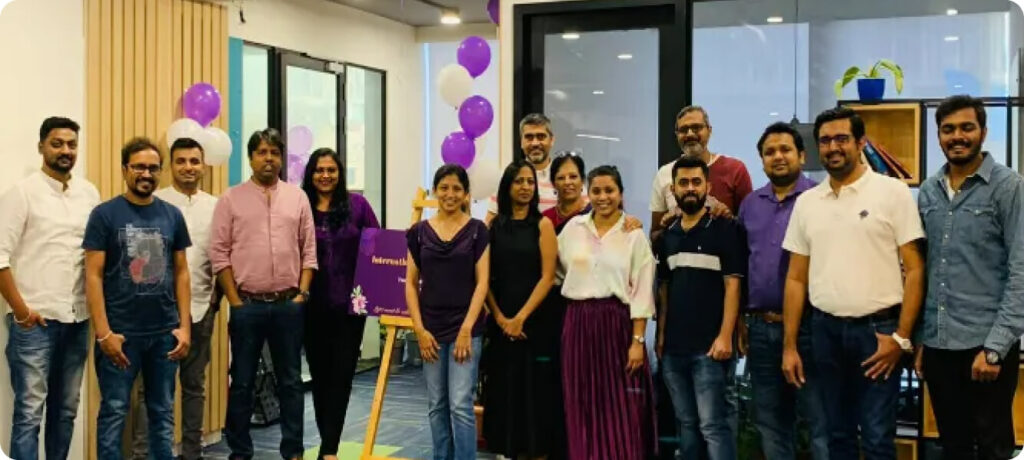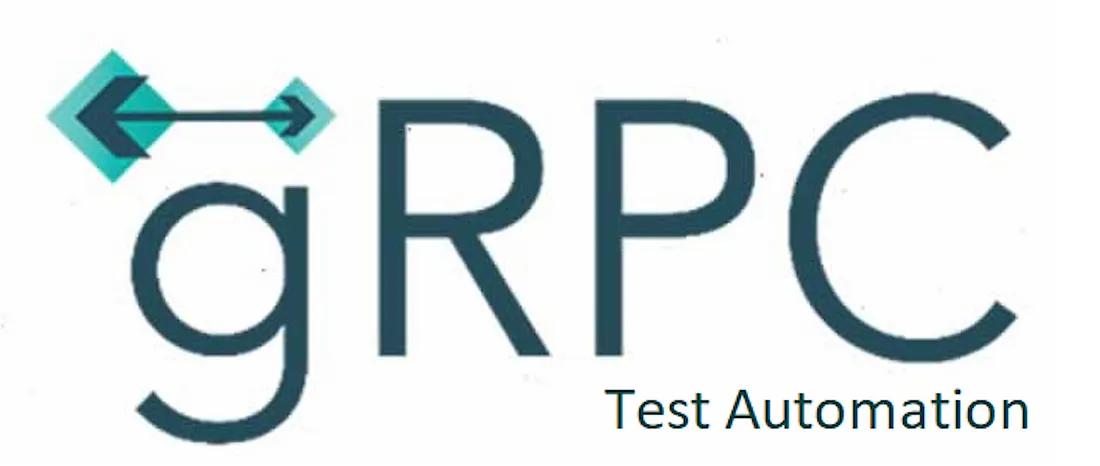
Does Your Company Need QA Transformation? Here Are the Warning Signs!
In the dynamic landscape of software development, ensuring the highest level of quality
Testing across all interfaces, platforms and architectural components
Product test engineering, Shift-Left testing and digital transformation
Automate tests across all interfaces, platforms and horizontal scaling
Generative AI, Flutter, React Native, Micro-services, Micro-frontends & TestOps
Measure and enhance the efficiency & effectiveness of testing teams & solutions
Offshore Testing Setup as a Service, platform engineering and Modernisation


How to Facilitate a Productive Work Culture
A study by Quantum Workplace highlights that 4 million employees voluntarily left their organizations in April 2021 with another 3.9 million employees adding to the list in June 2021. With the employee turnover rate increasing, every aspirational company is exploring various ways to enhance employee engagement and retention rate.
While productivity remains at the heart of any organization, the focus on creating an employee-friendly work environment is gradually increasing. Nishant Verma, the CEO of a reputed software testing company TestVagrant Technologies, asserts that “Productivity is directly associated with work satisfaction. The work atmosphere, culture, trust, transparency — all these contribute to inspiring job satisfaction, which in turn, ensures productivity”.
Here are a few ideas that worked wonders for TestVagrant in creating a productive workplace. Check these out.
Lengthy desks with lots of chairs placed one by one. When we say “corporate”, this is the picture that comes to your mind, right? Take a break from it! Instead, set up a cozy and comfortable workplace where your team can feel free to walk around, sit wherever they want, and get their job done. Apart from that, maintain proper lighting, temperature, and humidity to ensure people can work comfortably at the office.
Not sure if we are in our right mind? Environment significantly impacts the human psyche, and a cosy workspace greatly enhances workability and productivity. This is why TestVagrant Technologies gives a break from the confined workspace found at most IT firms. From cosy sitting areas to game zone — they maintain a perfect balance between work and play! The Delivery Lead Anshul Mathur humorously puts it as “a party place!”


Every company has a vision and it’s important to inspire all the employees to align with the vision. But the process needs to be subtle instead of forceful. Bringing the best out of everyone requires the employers to provide adequate freedom to the employees. That way, they will put more on the table than you might have expected. At the same time, it’s also crucial to have a safety net in place so as to sustain steadily.
Now, building a creative space may pose some challenges and is harder than it sounds. The employees may end up losing direction and feeling overwhelmed. If every employee starts working on his/her own, how will the ship (the company) sail in a specific direction?
This is where TestVagrant has introduced a pathbreaking and result-driven strategy that strikes a balance between the company’s vision and the creative freedom of the employees. They encourage the employees to define their KRAs (Key Responsibility Areas) aligning with the company’s mission. The employees can set both short-term and long-term goals, and keep achieving them as they progress.
They are free to experiment with their work and even introduce something new to the company. TestVagrant Technologies also funds courses that their employees are willing to learn, should it help them to add value to the company. They can also purchase books and periodicals every month (funded by the company) to enhance their skills. All these HR policies ensure that the employees can enjoy a free & creative space and deliver results.
Micromanaging is one of the major reasons for employee resignation. Nothing frustrates people more than someone constantly monitoring their every move. Imagine this — a workspace where anyone can come up with new ideas, make suggestions, raise voice, and no manager is there to set rules.
Sounds like a dream? Well, TestVagrant Technologies made it come true! Here’s how. There is no “manager” in the team to judge the work and capabilities of any employee. The leaders, including the co-founders, are receptive to employees’ feedback. Easy communication is encouraged across the teams. A common space without individual cabins for the team leaders further evokes a positive team spirit.
All these come to reality because the leadership team emphasizes on building teams with self-motivated and self-organized employees. Such employees need not rely on any external force to achieve the goals. Instead, they are ready to take the company to the next level by constantly honing their skillset as per industry demands.
Inspiring trust lies at the core of a productive workplace. The HR head at TestVagrant, Poornima Srinivasan maintains: “Instead of telling people ‘we trust you’, we speak through our action”. Towards this aim, the company has brought forth several unique policies that benefit the employees, including the self-appraisal system.
Unlike most SMEs and MNCs, TestVagrant nurtures a futuristic model of self-appraisal instead of practising the cliched normalization or force-fitting policy. There are three parts to self-appraisal as outlined below:
TestVagrant Technologies doesn’t believe in complacency. The employees are encouraged to sharpen their skills and set new standard. The leaders are always ready to help them.
This entire exercise focuses on inspiring a sense of self-motivation among the employees and thus increases productivity. Here is a blog on how TestVagrant practices performance appraisal in a unique and efficient manner. Give it a read for a deeper understanding.
During the pandemic, many companies have shifted to a work-from-home model. Now that the fear of COVID infection is gradually subsiding, many offices are reopening and welcoming their employees.
However, instead of making work-from-office compulsory, opting for a hybrid model may positively impact productivity. A striking survey by Connect Solutions finds that 77% of the employees who work remotely at least a few times every month demonstrate increased productivity. 30% of them are found to have accomplished more work in less time!
Also, remote work enables a company to extend its workforce and acquire talents from around the world. Employees staying at distant places need not commute to the office and they can devote that time and energy to their works. Needless to say, all these contribute to enhancing productivity.
Now, it’s important to stress the elements of communication, coordination, and team bonding while operating remotely. TestVagrant Technologies has incorporated various measures into their work culture including celebrating events from time to time, arranging video conferences, and more in order to evoke a sense of belongingness among the employees.
Share This Article

In the dynamic landscape of software development, ensuring the highest level of quality

Rapid Test Development Platform meets Next-Generation Mobile Apps and Cross Browser Testing Cloud
